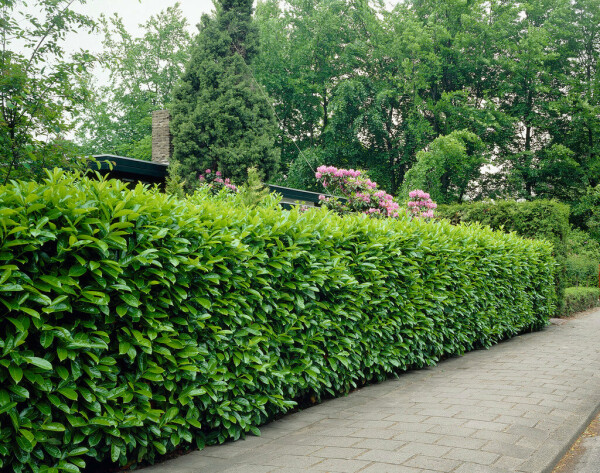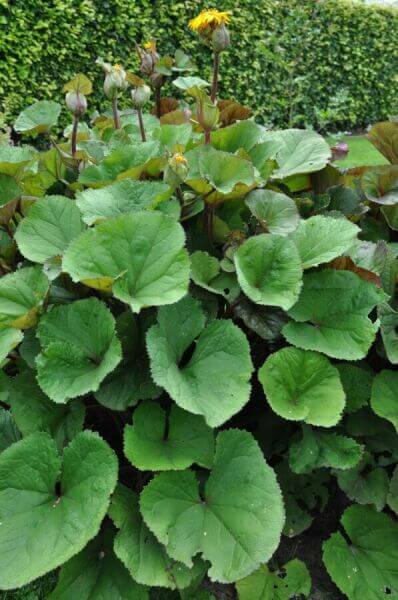Hedge Plants For Porch Edges
Hedge Plants For Porch Edges
Blog Article
Best Hedging Plants For Narrow Spaces
Improve your garden's attraction with rich hedge varieties such as Yew (Taxus), Thuja, Laurel, Photinia, and Bamboo, commemorated for their structural stability and environmental advantages.
Yew and Thuja provide evergreen protection and winter season durability, while Laurel offers fast growth and broad, aromatic leaves.
Photinia adds seasonal appeal with its lively red foliage, and Bamboo lends a low-maintenance, peaceful atmosphere.
These hedges enhance air quality, minimize sound, and create tranquil, personal areas.
Proper planting, spacing, and upkeep make sure energetic growth and environmental consistency.
Check out how these lavish ranges can raise your garden's appeal and well-being.
Key Takeaways
Change Your Garden With Lush Hedge Ranges
- Select Yew for its dense, evergreen development and unparalleled longevity.
- Select Laurel for its quick development and broad leaves, ensuring quick privacy.
- Select Photinia for its lively seasonal foliage, which turns a striking dark red.
- Make use of Bamboo for a low-maintenance, winter-hardy hedge with visual appeal.
- Space plants 2-3 per meter and prune regularly for optimal growth and health.
Popular Hedge Plants
When transforming a garden with rich hedge varieties, it's vital to think about popular hedge plants such as Yew, Thuja, Laurel, and Photinia due to their special attributes and advantages.
Yew (Taxus) is highly esteemed for its longevity and dense, green growth, making it a prime choice for withstanding landscapes.
Thuja is noted for its evergreen foliage and robust winter season resilience.
Photinia adds seasonal vibrancy with red leaves that darken in time, producing dynamic visual appeal.
Laurel offers rapid growth and fragrant, broad leaves, ideal for quick privacy.
In Addition, Bamboo is an exceptional option for atmosphere, providing a low-maintenance, winter-hardy choice that enhances the garden's visual with its classy, swaying walking canes.
These choices accommodate a range of horticultural requirements and preferences.
Benefits of Garden Hedges
Garden hedges use a multitude of advantages, making them an important addition to any landscape. These natural barriers are economical to implement and provide substantial wind security, enhancing air blood circulation and adding to noise reduction. The thick foliage of hedges like Thuja and Beech ensures personal privacy by obstructing visibility, developing a peaceful and secluded environment.
Hedges likewise play an important role in microclimate guideline, offering a steady environment that promotes plant growth and lessens temperature variations. Their elaborate leaf structures filter toxins, improving air quality and adding to a healthier garden community.
Moreover, hedges master noise reduction, taking in and deflecting acoustic waves to lower ambient noise levels. This double performance of offering both visual and acoustic personal privacy enhances the general harmony and aesthetic appeal of any garden.
Planting and Maintenance Tips
For an effective hedge, meticulous preparation of the planting area is essential. Make sure the soil has correct pH and drain to support strong root advancement.
Area the plants appropriately for the chosen types. Water the hedge often during its preliminary growth stage, adjusting as required with seasonal changes.
Carry out a systematic pest control and illness prevention technique, utilizing organic or chemical treatments when essential. Regularly examine for aphids, termites, and fungal infections.
Apply mulch to maintain moisture and reduce weeds. Seasonal pruning promotes dense growth and air flow, vital for plant health.
Following these standards will assist you cultivate a lively, well-maintained hedge that improves the charm of your garden.
Spacing and Cutting Standards
Spacing and Trimming Guidelines
Appropriate spacing and cutting are vital for cultivating healthy, aesthetically appealing hedges. Appropriate spacing makes sure each plant gets enough nutrients, light, and air flow.
Follow these standards for optimum hedge upkeep:
- Spacing: Position hedge plants 2-3 plants per meter to motivate robust growth.
- Pruning Methods: Regular pruning is important for maintaining desired hedge height and shape. Trim brand-new development in summertime and cut back older wood during winter.
- Seasonal Care: Change cutting techniques and schedules according to seasonal requirements to guarantee plant health.
- Hedge Height: Regularly monitor and cut to preserve the wanted hedge height and achieve uniform visual appeals.
Abiding by these steps will ensure your hedge grows, improving both the appeal and functionality of your garden.
Choosing the Right Hedge
Picking the Right Hedge
Choosing the appropriate hedge includes assessing elements such as mature height, foliage density, and ecological durability. Successful hedge plant choice requires comprehending each types' growth attributes and site-specific versatility.
For example, Yew (Taxus) provides excellent durability and dense development, while Thuja is noteworthy for its winter durability. Additionally, thinking about maintenance requirements is important; fast-growing species like Laurel or Privet need regular trimming, whereas low-maintenance alternatives like Bamboo or Ivy might be preferable for those looking for very little upkeep.
Ecological factors such as soil type, light schedule, and moisture conditions must likewise guide the choice procedure. This careful technique ensures the selected hedges will grow, providing both visual and functional advantages to the garden landscape.
Delivery and Planting Recommendations
To guarantee your hedge plants thrive, they must be provided by specialized couriers and planted quickly upon arrival.
Follow these vital actions for successful planting:
- Soil Preparation: Enrich the soil with natural matter to enhance drain and nutrient content.
- Planting Depth: Create a trench twice the width and equal to the depth of the root ball.
- Watering Strategies: Water completely after planting, keeping the soil regularly moist but not saturated.
- Mulching: Use a layer of mulch to maintain wetness and reduce weeds.
Consumer Support and Service
Offered the essential function of prompt help in horticultural pursuits, our customer support team is available six days a week through telephone, email, and social media to provide professional recommendations and promptly resolve any issues. Their dedication to fast response times guarantees client satisfaction by dealing with inquiries related to plant health, optimal planting techniques, and maintenance schedules.

----------------------
This detailed support group, enhanced by an excellent 9.3/ 10 consumer rating, highlights our commitment to improving the gardening experience for each customer.
Frequently Asked Concerns
How Long Does It Take for Hedge Plants to Establish?
Hedge plants normally require one to 3 years to become fully established, with the precise period differing by types and growing conditions.
Efficient care throughout this vital duration is necessary for robust development. Constant watering, vigilant weed control, and appropriate fertilizer application are critical in promoting strong root development.
For example, fast-growing species like Laurel may develop quicker, while slower-growing ranges such as Yew may take longer. Persistent maintenance accelerates the establishment procedure, leading to healthy and dense hedges.
What Are the Best Hedge Plants for Privacy?
The concern of the finest hedge plants for personal privacy involves evaluating evergreen and deciduous options.
Evergreen hedges like Thuja, Laurel, and Cypress supply year-round protection, guaranteeing continuous personal privacy.
On the other hand, deciduous hedges such as Beech provide seasonal privacy, shedding leaves in cooler months.
Secret maintenance pointers for personal privacy hedges include routine cutting, fertilizing in spring, and proper spacing-- typically 2 to 3 plants per meter.
In addition, consistent watering and thorough weed elimination are essential for promoting healthy, dense development.
Can Hedge Plants Attract Wildlife to My Garden?
Yes, hedge plants can bring in wildlife to your garden by offering essential advantages like shelter, food, and nesting sites, therefore improving regional biodiversity. Yew, holly, and laurel are excellent for bring in birds, while ivy supports a variety of bugs.
However, it's crucial to note that there are some downsides, such as increased maintenance to handle pests and regular maintenance. Carefully picking and maintaining hedge ranges can assist balance these disadvantages and advantages, ultimately promoting a sustainable and vibrant community in your garden.
Exist Any Flowering Hedge Plants Available?
Yes, there are flowering hedge plants offered that can boost the beauty of your garden.
For example, Elaeagnus, likewise referred to as Olive Willow, produces fragrant white flowers in the fall, adding a touch of beauty.
Photinia, another popular option, showcases vibrant red leaves that mature into a rich green, producing a vibrant visual result throughout the seasons.
To guarantee these plants prosper, it's essential to practice appropriate pruning methods and seasonal upkeep, such as cutting new growth in the summer and cutting back in the winter season.
These procedures will assist keep the health and aesthetic appeal of your flowering hedges.
How Do I Prevent Insects in My Hedge Plants?
To avoid bugs in hedge plants, use natural pest control methods and maintain proper hedge care. Introduce useful bugs like ladybugs, which take advantage of hazardous insects, to develop a well balanced community.
Routinely examine your hedges for signs of invasion and immediately eliminate any afflicted parts to avoid the spread. Make sure the health of your hedges by using well balanced fertilizers and offering sufficient water.
Use mulching to keep soil moisture and proper spacing to reduce plant tension and promote robust development. These practices collectively help in reducing pest concerns and keeping a healthy hedge.
Conclusion
In essence, selecting the right hedge ranges such as Yew, Thuja, and Laurel can change any garden into a peaceful haven. These plants provide year-round plant, Additional hints improve aesthetic appeal, and deal practical benefits like sound reduction and wind protection.
Correct planting methods, accurate spacing, consistent watering, and seasonal cutting are crucial for optimal development.
Trusted shipment services and expert consumer assistance ensure a smooth experience from purchase to planting, making it simpler than ever to elevate your outside space.
Garden hedges use a wide range of advantages, making them a valuable addition to any landscape. These natural barriers are cost-effective to carry out and provide substantial wind protection, boosting air circulation and contributing to sound reduction. The thick foliage of hedges like Thuja and Beech ensures personal privacy by obstructing exposure, developing a peaceful and remote environment.

Pruning Methods: Regular pruning is essential for keeping wanted hedge height and shape. Trim new development in summertime and cut back older wood during winter season.
Report this page